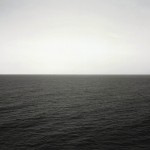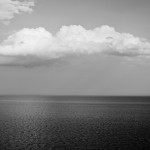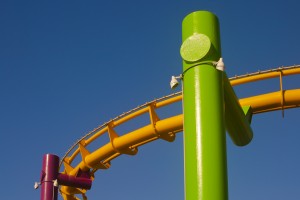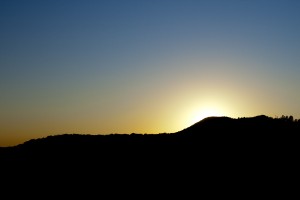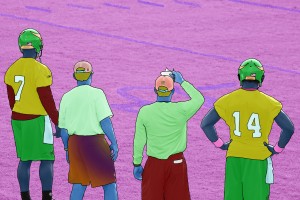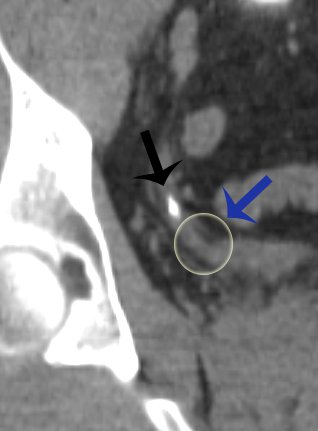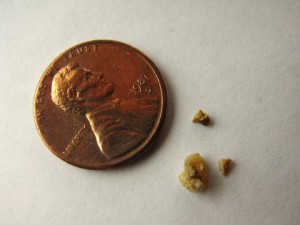I must apologize for the dearth of updates. It has become a busy period for me as my commitments are coming into full swing once again. I’ve been juggling my schoolwork with my duties as the photo editor for The Overtime Page as well as my paying job and my CoogRadio duties. It’s left precious little time for blog updates, and for that I am sorry. I’m finally getting settled into my routine and will update accordingly. As for now I just want to let everyone know I’m still alive.
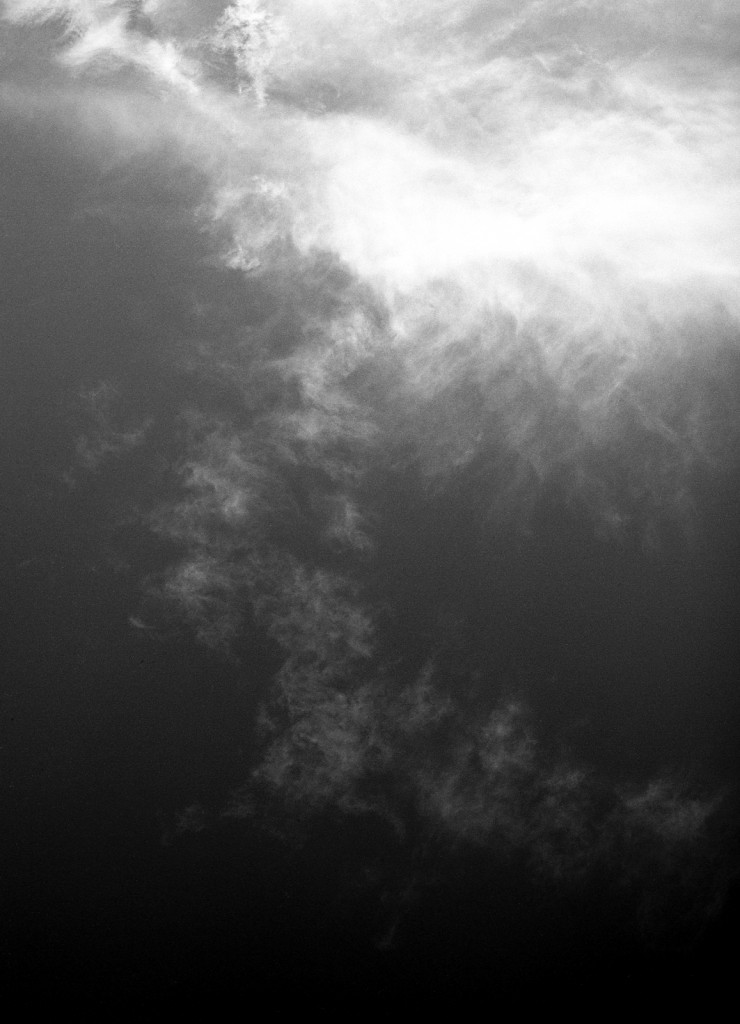
Category: General (Page 3 of 6)
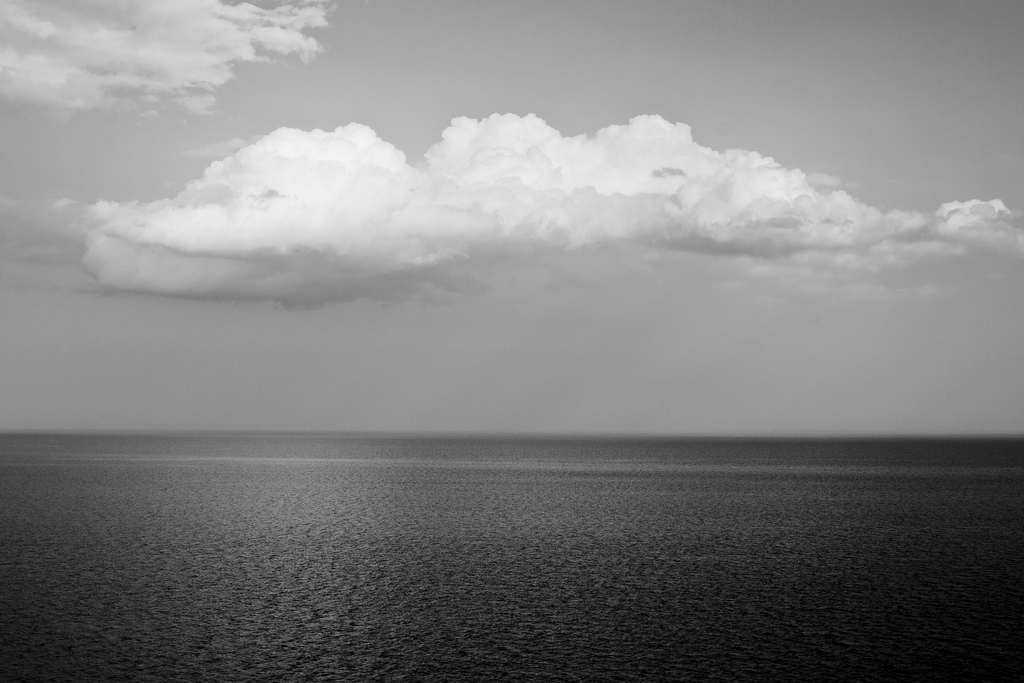
Memory
Watch Memory on PBS. See more from ART:21.
This is the first time I’ve ever sat through a full episode of Art 21, although I did watch the segment on Sugimoto a few years ago in my very first photography course. This episode features the art of Susan Rothenberg, Mike Kelley, Hiroshi Sugimoto, and Josiah McElheny. I must say was rather intrigued by the artists’ use of memory in the creation of their art. Rothenberg, Kelley, and Sugimoto concentrate more on responses to their own individual memories, while McElheny seems to tap into a shared memory of the human experience. Pay particular attention to his reflective glass exhibit under the 2-way mirrors.
I enjoyed this very much, especially finding Sugimoto again as I could not remember his name after watching the video those years ago. The influence was so great that I even tried to make my own seascapes, as seen below. Feel free to discuss.
- Indian Ocean by Hiroshi Sugimoto
- Lake Superior by Rick Custer (2009)
First off, let me apologize for not having posted since late February. It got to be a busy time, especially with my Color Theory course, where the work pace picked up in tremendous fashion as the projects got more complicated. My Primitive Photography and Critical Theory classes both also took a lot of time as I started noticing transformations in my thinking and work. I’ll talk more about in later posts. The good (bad?) news is that now I’m free for the summer and can now concentrate on my own work that develops in my mind.
On Friday I went down to the front offices for the Houston Dynamo and picked up my credentials for the season. This also gave me the chance to head over to Rothko Chapel and finish out a roll of 120 color film that has been sitting in my 645 camera for a little over a year. Don’t ask why, just know that it is. I’m currently waiting to be able to pick it up from processing, which should be in about 8 hours. On Friday I also learned of the new displays at the Menil Collection, so on Saturday I headed down there to check them out.
The first new exhibit was “The World is not My Home” by Danny Lyon. This exhibit of photographs was meant to trace Lyon’s career as a photographer. While all of the photographs demonstrated great composition and beautiful printing, I have a hard time recalling any of the photographs that stuck out to me. The one that stuck out the most was “Crossing the Ohio.” This photograph shows a motorcycle rider looking backward as he moves forward into the frame. Why is he looking back? Is he riding to freedom? Is he fleeing something? The frame leaves out these details, which makes me want to know them more as I study the image in front me. I would provide a link, but unfortunately the Menil is only showing a thumbnail version on its website. The link to the Menil Collection website is below.
The other exhibit was the one that really captured my attention. This was a retrospective on the drawings of Richard Serra, an American sculptor who is probably best known for his controversial work in New York City known as “Tilted Arc.” The exhibit consisted of 2 discreet units inside the museum itself. The second unit is the one that captured my attention. These “drawings” are large in scale and consist mainly of black paint stick on paper. The drawings themselves are, for the most part, binary in tone (black or white), with only a few pieces in the exhbit demonstrating any sort of grayscale.
The large squares at the beginning of the exhibit seemingly transform the space around you. When entering I felt that I was in a void (because of the black) with the white causing the walls to close in around me. As you move through the exhibit, the shapes change in a subtle way, slowly easing off the claustrophobic effects of the white. The shapes also seem to grow more complicated as you pass through. It’s not so much the shape itself, but its placement and spatial harmony grow more complicated. At the center of the exhibit one encounters a deviation from the squares in the form of circles. The circles themselves are black but are surrounded by a field of gray. Then, as the exhibit progresses, the shapes start to become simple once again, culminating into a piece that is haunting. The piece itself is entitled “Two Corner Cut: High, Low 2012.” It consists of a long room with a black square on each side. Each square is set at an angle moving down from the front of the room to the back. The back wall is white. Here one has reached the end. This is a new visualization of the “light at the end of the tunnel” theme. The downard angle creates the illusion that when you are walking forward, you are ascending a ramp, even though the floor is itself even.
I spent 5 minutes in this room contemplating the journey I just completed through this exhibit to that very room. I wanted to go back, but then realized that going back was not going to help anything. I needed to deal with what I felt at that moment and move forward. Where we go from here is anyone’s guess.
Of course now I had to buy the book at the Menil Bookstore ($50) but as I started reading it, I felt that this expenditure was well worth the money.
That’s it for this edition of the blog. There are going to be a lot of updates coming as I attempt to play catchup with the posts and share my art and photography with everyone. So to all my faithful and not-so-faithful readers – I bid you a goodnight (or good morning… I can’t tell at this point).
Click here to visit The Menil Collection Website
Over time we all experience changes in our perceptions of the world. The changes may go unnoticed, but they are there. I’m no exception to that rule. Here are a few photographs I took just over 3 years ago while on a trip to Los Angeles. I initially rejected them, but my changing vision has allowed me to rethink them. Enjoy and comment at will.
(Click on each photo to embiggen)
It has been a busy month…
I spent a week in New York for my 20 year class reunion. I had a good time as I was able to see a friend I’ve been wondering about since Fall 1991 but have never been able to contact. I also got some good photos. Some were tourist-y, but I did get some good artistic shots in as well. It took a while to go through them all as in the end I took nearly 300 photographs. Some of them were bracketed shots and I even got some on the tripod in order to attempt some HDR processing (more on that later).
After that I spent time catching up on work that serves to finance this blog. After some nail-biting over the labor negotiations, we finally have NFL Football back in our lives. My season tickets arrived just the other day. Now I need to print some tickets to attend the open training camp days so I can get some new pics this year. Last year I also attended a Minnesota Vikings training camp, which was fun. I would like to attend a different team training camp this year, but for some reason I don’t think it’s going to happen.
And today I started the path to my formal photography education as I attended the new student orientation at the University of Houston. I was surprised to find that I’m classified as a senior even though I have at least 4 semesters worth of work ahead of me. The advisor told me that it’s probably based on the hours I accrued at Lonestar in pursuit of my AAS Management. As I’m completing my core requirement (2 courses left!) at the Community College level, I didn’t want to take too many University-level courses. It’s actually a good thing at this point – only 1 course I needed was open for registration as of today. So, I am now taking an course in “Selected Topics in Art History.” There is a digital photography course I am required to take, but again that’s full. I was told that a there is currently a pending request to add another section, but they are not sure if it will be approved in time for the Fall Semester. If it isn’t approved I will need to sneak in behind someone who didn’t pay on time or try to get the instructor’s permission to take on another student. On a good note, I was pleasantly surprised to find that I completed 9 of my 12 required hours of fundamental studio art courses (the digital photo course will make 12) and the advisor is giving me permission to take Junior level art courses as soon as they become available!
So, in a nutshell, that was my month of July. I have also been making photographs, as you may have seen in the gallery site. I swear I will one day unify both the gallery and the blog, I just need to find the time to work that out. August will be a flurry of activity as I figure out how to pay for classes, start classes, and try to make art. I hope you all are enjoying your summer. For those you who have not seen my body of work, the link is below and on the home page. Have a good night, everyone.
Yep, it’s been a while since I’ve updated. I guess I’ve just been kind of relaxing the part of my brain that wants to make art. That’s not a bad thing, but I do need to get back down to business as far as that goes.
For the semester I received 2 grades of A (English II and Digital Art) and 1 grade of B (Art History I). I would have liked 3 A’s, but my silliness in regards to some Art History assignments caused those potential grades to become 0’s, which dragged my grade down quite a bit. I also spoke with an advisor at the University of Houston a couple of weeks ago. I found that I’m not too far from being able to apply for the Bachelor’s of Fine Arts – Photography program at the school. Right now there are a couple of core classes along with some foundational art classes that I can take at the community college level and there are a couple of art courses I need to take at the university level as no community college equivalent exists. I also found out that I can take them concurrently, which is a huge bonus! I have my application to attend the University of Houston submitted and at this time I simply await their rejection (not likely but always possible) or their telling me what to do next. I’m getting pretty excited, kinda like the first time I went to an NFL game.
I also discovered a new paper just today. It’s called Museo Silver Rag. It’s a luster paper, which means it has some gloss (which is great for color gamut) but is not so shiny as to cause vision loss when the light reflects off the surface and into your eyes at certain angles. The colors on this photograph I printed really popped, and the saturations where incredible – better than the MOAB Lasal Luster I have been using to this point. The only problem is that the Museo Silver Rag is more expensive than the MOAB papers I usually use, and, at least locally, it is a little harder to obtain.
Well, at this point I’m going to say goodnight. Have fun, everyone, and I will be back soon.
I know it’s a corny play on a popular movie title. I just couldn’t leave it alone.
Thursday nights at the Museum of Fine Arts Houston (MFAH) are free to the public courtesy of the Shell Oil Corporation (you know – that big evil oil company). Another good thing about Thursdays is that the museum is open until 9 pm (again, thanks to Shell, evil corporation that it is). My Digital Art professor told me about the Heinrich Kuhn exhibit currently at the museum. Well, thinking that the price of admission (free) was perfect, I thought it would be a nice way for my and my wife to break the monotony of mid-week life. So, off to the MFAH we went.
The first exhibit we visited was the Carlos Cruz-Diez exhibit. For those of you not familiar, Cruz-Diez has spent his life studying color perception and translating that to his art. The exhibit progresses from his early experiments with color in the late 1950’s all the way to his sophisticated physichromies of today. Much of his work is centered around the changing perceptions of color and shape as we move from one point to another. During the progression you can see the increasing sophistication of his work. Along the way we see shapes added. Shimmers are soon added. Then we see shimmering shapes. Then there are light plays as the vertical lines in the piece are not of equal widths throughout. Then there are plays on the orientation of lines. They all add up to amazing effects on a piece as you move from one side to another as you view the work. The MFAH has one of his chromosaturation pieces where individual rooms are bathed in colored light. Each room is a different color, and it’s amazing how the color changes are quite abrupt. It’s hard to imagine how he came to this work, but he definitely challenges the viewer’s individual perceptions on color. I personally have never seen anything quite like it before.
The second exhibit I visited was the Heinrich Kuhn exhibit, entitled, “The Perfect Photograph.” The works on display are (mostly) Kuhn’s work from just before the turn of the century to just after the start of World War I. One thing I found interested was the fact that there were no silver gelatin prints present. All of the prints were made using an “alternative” process. Mostly there were gum bichromates, platinum prints, oil transfers, and combinations thereof. There were a few other processes present, but these aforementioned made up the bulk of the pieces. The thing that really caught my eye were the gum bichromate prints. Some of these prints were, what I would guess, around 2′ x 2.5′. Keep in mind that the gum bichromate process is a contact process. What this means is that the negatives have to be the same size as the final print. How on earth, in the absence of an electric enlarger, make negatives this size?! Unless his camera took negatives this size (which is doubtful given just given the size of the lens necessary to cast that large an image circle), I just can’t figure out how he did it. I did by the book they had on sale in the museum retail shop, but I have yet to crack it open. Hopefully it will reveal his secret. I’ll keep you posted on that.
As for the pictures themselves, they were pretty amazing. The skill shown, especially where gum bichromate is concerned, is definitely that of a master. Some of the pictures on display would definitely look quite ordinary and uninteresting with the cold precision of a modern digital SLR, but the alternative processes give them a life that, at times, seems otherworldly. The roughness of the watercolor paper (modern photographic paper is basically watercolor paper coated with light sensitive silver salts) is counteracted by the soft edges on the subjects themselves. There are landscapes, portraits, nudes, and scenes in the collection. Around the turn of the 20th Century photography was considered by many as a mechanical endeavor. This was also an image that some photographic societies wished to maintain – John Pouncy, the “father” of the gum bichromate process, was sharply criticized by the London Royal Photographic Society for his work because they felt it crossed too much into the world of art for it to be considered a photograph. Kuhn’s work (along with others of his time such as Eduoard Steichen) seems to mark a turning point to where photography started to receive consideration as an artitistic medium.
The final exhibit I visited was the Neoclassical collection. The MFAH currently has on loan some masterpieces of the Neoclassical era from museums all over the world, including the Louvre in Paris. I won’t bore you with the ones that I really liked because many of these are very familiar to us, whether we know them or not. One thing to keep in mind, however, is that nothing compares to seeing a work of art when the actual piece is in front of your eyes. Pictures in a book or a on a computer screen are not the same. Such masterpieces as Oath of the Horatii by Jacque-Louis David and Ernst Matthai’s Venustake on a whole new life. I said I wasn’t going to bore you with my favorite, but this is an obscure piece and it really seemed to strike me. It is by John Flaxman and it is called St. Ethelburga With Her Chaplain, St. Paulinas of Rochester, Bringing Christianity to Northumbria. The piece is done in pen and ink with gray wash. The drawing is of four figures walking from right to left through a forest. The forest itself is gray but the figures walking are pure white outline (the whole piece is outline, but the gray wash adds texture and feeling to the forest). The figures seem to be glowing, as if having come just short of divinity while still in the mortal realm. The piece itself is very haunting (and I would guess it was part of the inspiration for the cover of the Beatles album Abbey Road. Alas, I have yet to find an electronic reproduction anywhere to show you, but I am still searching. Plus, I want a print for myself.
Thus ended an evening at the museum. There are some new exhibits starting soon and I am going to make sure to get down to those. Well, it is officially Sunday morning now and I do need to get some sleep. Have a good night, everyone, and be sure to visit the links below to see some of the things I was talking about. Take care.
Carlos Cruz-Diez Website
Museum of Fine Arts Houston (from here you can get to the three exhibits mentioned above to see some of the key pieces)
Yesterday I went, on a school-sponsord trip, to two museums in San Antonio. The first was The McNay and then to the San Antonio Museum of Art (SAMA). Both museums were rather interesting.
The colleciton at the McNay is pretty impressive (much more extensive than Houston’s The Menil Colleciton), but not much really really seemed to strike me. I loved the Medieval Collection at the McNay. That period seems rather underrepresented in a lot of collections, and this was the first time I had seen more than a piece or two from that period of European history. A couple of contemporary pieces did catch my eye. One was entitled “The Cocktail Party.” The piece itself is the size of a small room with several human figures (made of paper-mache, perhaps). The interesting thing about this exhibit was the fact that it all the exterior surfaces in the piece were covered in Cheez Doodles. Personally I had never seen so many Cheez Doodles in my life. A couple of the figures contained mechanics and performed repetitive motions, which definitely added some depth to the piece. The other piece of art that caught my eye was the exercise equipment/torture device sculpture. This wooden sculpture was in the form of an all-in-one home gym setup at home, but it was stylized after some of the more popular medieval torture devices found in dungeons. Since both pieces are part of a visiting exhibit, I was not allowed to take a picture of them, but you can see “The Cocktail Party” at the McNay website (link below).
I was rather impressed with the size and scope of the collection at the SAMA. The Western antiquities collection is what impressed me the most. In terms of pieces, the collection is rather extensive. It even includes a heroic sculpture portrait of Marcus Aurelius and a heroic sculpture portrait of Trajan. I’m not sure if these were official portraits (the head on the Trajan sculpture is believed to have been added to its body in the 18th Century), but they are impressive nonetheless. The antiquities collection is quite impressive, but in contrast to the Museum of Fine Arts Houston, the Houston museum contains fewer pieces, but in my opinion, the pieces in Houston are more significant. Houston also contains a great deal of non-Western antiquities. SAMA also includes a Colonial period Latin American exhibit, with its cornerstone piece a very large golden altar with a painting of the Virgin Mary in the center. This particular pieces easily tops 20 feet in height and is absolutely beautiful.
As the day came to an end I was glad to be going home, but now I’m itching to go to either Dallas or Austin to see what’s on display in either of those cities. Until then, however, I’ll just have to rely on what I can find online.
Work on my project for Digital Art is progressing. I’m finding this to be a challenge as I am forced to work on indivual pixels at times in order to make things integrate smoothly. I hope to have it done by Tuesday at the very latest and will post it once I turn it in for grading. As for me now, I have to get some sleep. Have a good night, everyone, and if you get a chance, check out the links I provided below.
I have completed the first project for my Digital Art course. And now, without further ado, here is “The Smurf Village Vikings Superbowl Adventure””:
As I’m sure you can tell, this did take me quite a bit of time to complete. I would guess in the beginning time was split equally between thinking about what I was going to do and getting used to the tools. As time went on I found myself thinking more about what to do as the tools became easier to use. All that is left now is to print it and hand it in on Tuesday.
Now I need to get started on my next project.
Comments are welcome and encouraged.
For the past month or so I’ve been battling a kidney stone. On January 11, 2011 I had a CT scan done and this is what it showed (note: the arrows are my own but based on the report the Urologist received):
The black arrow is pointing to the stone (3.5mm in size according to the report) itself in the distal right ureter and the blue arrow and circle are pointing to a slight edema which is preventing the stone from moving forward.
Fast-forward one month: I think I passed the stone as I saw it leave my body. I pulled it out of the strainer and dutifully placed it in a Ziploc for the Urologist at my next appointment. For the next 24 hours, however, I’m finding it very uncomfortable to urinate and I have a weak stream. As I looked, there was a larger piece of stone right at the external opening of my urethra. After some trouble, it finally passed through. Here’s the result:
The larger stone is clearly bigger than 3.5mm and could cover Lincoln’s face on that penny. I feel soooooo much better now, especially since I was looking at surgery to laser the stone. It was explained that they could only use the shockwave treatment if the stone was visible on normal X-Ray, which mine was not (I’m wondering why, given the size of that thing). Hopefully this is the end of the kidney stone saga. Now I can get back to artwork and photography and not have to worry about how I was going to meet my deductible and still keep food in my belly.
Comments are welcome and encouraged.
